Disclosure: This article contains affiliate links. We may earn a commission from purchases at no extra cost to you, which helps our travel content.
As someone who's navigated high-security situations across the globe, I can tell you that few things rival the efficiency of Helsinki's public transportation system—especially in winter. My first visit to Finland's capital coincided with a joint international security conference, but it was the city's remarkable transit network that truly captured my professional admiration. Helsinki transforms during winter months, with temperatures plunging below -15°C (5°F) and daylight hours shrinking dramatically. Yet locals move through this snow-globe world with remarkable ease, thanks to an integrated transit system designed to conquer Nordic winters. Having returned multiple times—both for work and to explore my fascination with Nordic folklore—I've compiled this practical guide to help solo travelers navigate Helsinki's winter transit landscape with confidence, precision, and minimal expense.
Understanding Helsinki's Transit Network: The HSL System
Helsinki's public transportation operates under a unified system called HSL (Helsingin Seudun Liikenne), which integrates metros, trams, buses, commuter trains, and ferries across the capital region. This level of integration immediately impressed me during my first security assignment—the systematic approach reminded me of our operational protocols at the Bureau.
The city divides into zones labeled A, B, C, and D, radiating outward from the center. As a visitor, you'll likely need only zones A and B, which cover central Helsinki and extend to the airport. The zone system operates on a flat-fee basis rather than distance traveled, meaning once you've purchased the appropriate zone ticket, you can make unlimited transfers between different transit modes within your time window.
What makes Helsinki's system particularly valuable in winter is its predictability. Even during heavy snowfall, delays are minimal—a testament to Finnish preparation and engineering. Digital displays at most stops provide real-time updates, and the HSL app (available in English) offers route planning with remarkable accuracy.
For winter travelers, I strongly recommend downloading the HSL app before arrival and purchasing a portable power bank to keep your phone charged in cold weather, which drains batteries surprisingly quickly. My agency-issue phone couldn't last a full day of navigation in Helsinki's February temperatures without backup power.

💡 Pro Tips
- Download the HSL app before arrival for English-language route planning
- Purchase multi-day tickets for the best value if staying 3+ days
- Screenshot your digital ticket as backup in case your phone dies in the cold
Purchasing and Using HSL Cards: A Winter Strategy
During winter visits, your transit strategy needs to prioritize minimizing outdoor wait times and maximizing flexibility. The cornerstone of this approach is obtaining the right ticket format.
HSL offers three main ticket options:
- Single tickets: Purchased via machines, mobile app, or directly from drivers (on some services)
- Day tickets: Valid for 1-7 days of unlimited travel
- HSL Card: A reloadable card that can store either value (pay-per-ride) or time (unlimited rides)
For winter visitors, I unequivocally recommend the HSL Card with a time period loaded. After analyzing cost-efficiency across multiple visits, I've found that even for a weekend trip, a 3-day ticket pays for itself quickly. The card costs €5 initially (non-refundable), but the convenience of not fumbling with individual purchases in -10°C weather is invaluable.
During my last February visit while researching Finnish ice architecture, I purchased my HSL Card at the airport R-kioski (a ubiquitous convenience store chain). The process took less than three minutes—efficiency that would impress even my FBI colleagues. The clerk loaded a 5-day AB zone pass, covering central Helsinki and my daily excursions to the frozen harbor.
One critical winter tip: keep your HSL Card in an inner pocket. Not only does this protect it from potential theft (a habit from my professional training), but it also prevents the card from becoming brittle in extreme cold, which can cause reading errors.
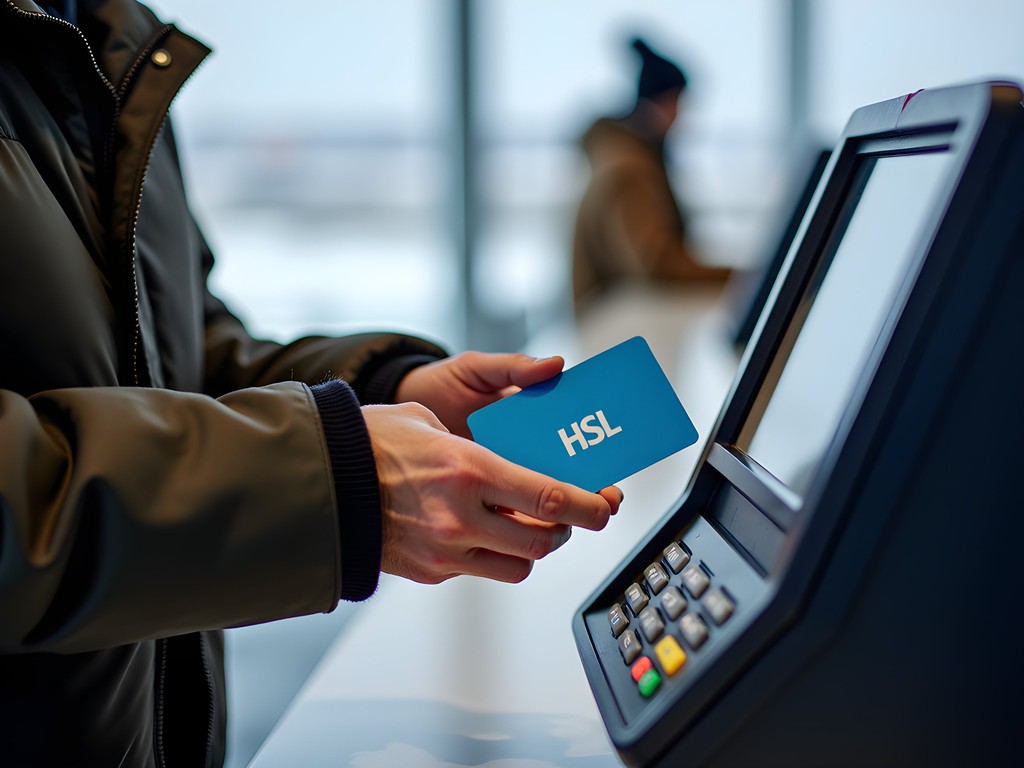
💡 Pro Tips
- Purchase your HSL Card at the airport immediately upon arrival
- Select AB zones unless you specifically plan to travel to outer regions
- Keep a photo of your card number in case you need to report it lost
Metro and Trams: The Winter Transit Backbone
Helsinki's metro and tram network forms the backbone of winter transportation, and understanding their distinct advantages will significantly enhance your mobility.
The Metro consists of two lines (M1 and M2) that share a common route through the city center before splitting east of Itäkeskus. With trains arriving every 2-4 minutes during peak hours, the metro offers the fastest option for longer distances. During my security conference at Messukeskus, I relied on the metro's precision timing to coordinate with international colleagues.
What makes the metro particularly valuable in winter is its climate-controlled stations and carriages. After walking through -15°C winds, stepping into the warm orange glow of a Helsinki metro station feels remarkably civilized. The stations feature distinctive architecture—many resembling cave-like structures carved from Finnish bedrock—which aligns with my interest in how architecture adapts to extreme environments.
The Tram network provides more granular access to central Helsinki. Lines 2 and 3 form a figure-eight loop around the downtown core, making them excellent for sightseeing. Trams arrive frequently (every 6-10 minutes) and feature large windows perfect for observing the snow-covered city.
For winter travelers, I recommend investing in quality merino wool base layers to stay comfortable moving between heated transit and frigid outdoor conditions. The temperature differential can be shocking to the system, and proper layering prevents both overheating and chilling.
One security-minded observation: Helsinki's transit system features remarkably few cameras compared to American systems, reflecting Finland's high-trust society. Nevertheless, remain vigilant about personal belongings, particularly when boarding crowded trams where close physical proximity can create opportunity for pickpocketing.
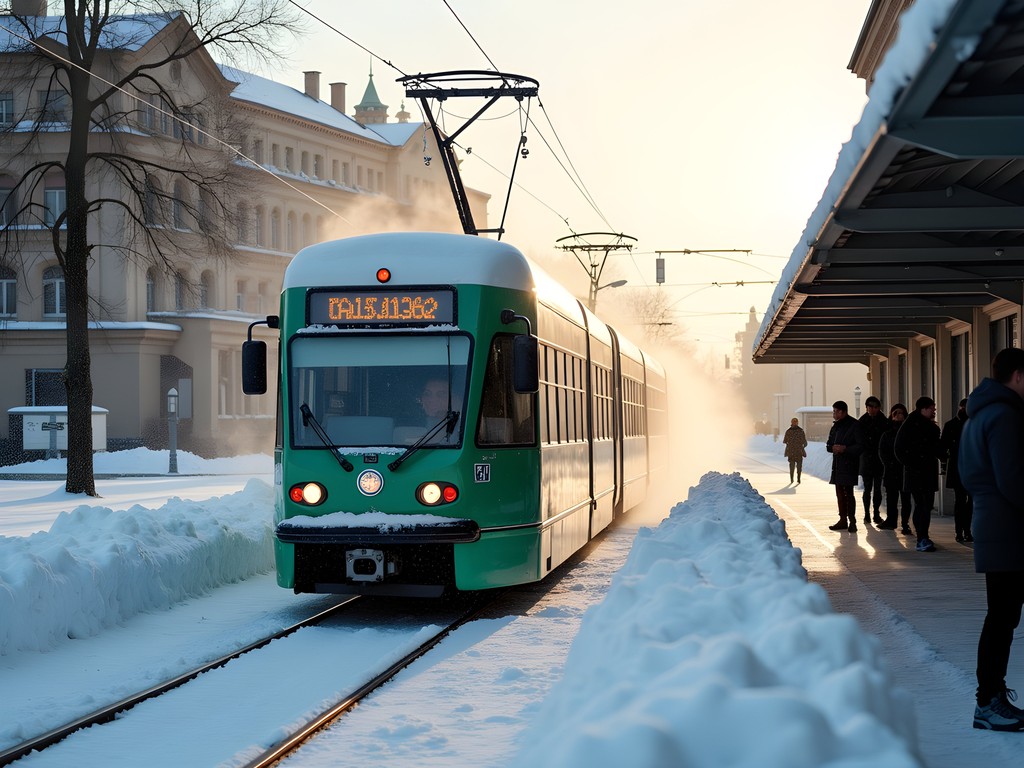
💡 Pro Tips
- Stand in the middle of metro platforms where it's warmest while waiting
- On trams, board through the middle/rear doors but exit through any door
- Remove backpacks on crowded vehicles to create more space (and reduce theft opportunity)
Buses and Winter Route Planning
While trams and metros form Helsinki's transit backbone, buses provide crucial connectivity, especially in areas outside the central core. During winter, understanding bus operations becomes particularly important as they're more susceptible to weather delays than rail-based options.
Helsinki's bus network is comprehensive and operates on scheduled timetables rather than frequency-based service like metros. This means checking departure times is essential—standing at a bus stop for 20 minutes in -20°C is an experience I don't recommend (and I've survived FBI winter training exercises in northern Minnesota).
The most valuable bus routes for visitors include:
- Route 615: Airport to city center (though I recommend the faster train)
- Route 24: Connects major southern Helsinki attractions
- Route 78: Provides access to the winter-spectacular Seurasaari Open-Air Museum
For efficient winter navigation, I rely on the combination of the HSL app and a weatherproof city map. While digital tools are convenient, batteries fail in extreme cold, and having analog backup aligns with my professional contingency planning habits.
When planning winter bus journeys, add 15-20% to estimated travel times. Helsinki's bus drivers are remarkably skilled in snow conditions, but physics still applies. I've observed that buses consistently arrive within 5 minutes of scheduled times even during snowstorms—impressive by any standard, but still requiring planning buffer.
One distinctive aspect of Finnish bus etiquette: the profound silence. Coming from American cities, the absence of conversation on public transit can be startling. This isn't rudeness but reflects Finnish appreciation for personal space and quiet. As a naturally observant person (occupational habit), I appreciate this cultural norm that allows for heightened situational awareness.
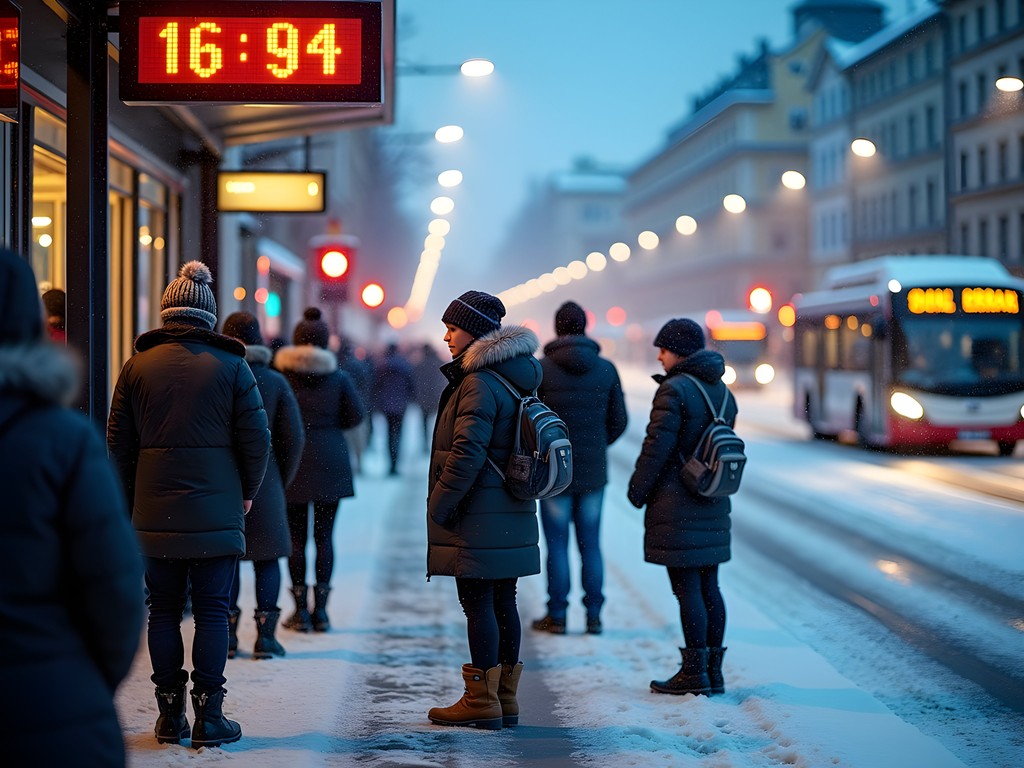
💡 Pro Tips
- Signal bus stops by pressing stop buttons well in advance on slippery roads
- Enter buses through front door and show/validate tickets to driver
- Stand back from curbs at bus stops as passing vehicles may splash slush
The Airport Connection: Train vs. Bus Options
For winter arrivals to Helsinki, your first transit decision occurs immediately: how to reach the city from Helsinki-Vantaa Airport (HEL). Having analyzed this route multiple times under various weather conditions, I can provide a clear assessment of your options.
The Ring Rail Line (I and P trains) connects the airport to Helsinki Central Station in approximately 30 minutes. Trains depart every 10-15 minutes from the underground station between airport terminals. This is unquestionably your best winter option for several reasons:
- Reliability in snow conditions (trains rarely experience weather delays)
- Comfort (spacious seating, luggage racks, climate control)
- Speed (30 minutes versus 45+ minutes by bus)
- Frequency (no long waits in cold weather)
The Finnair City Bus operates directly between the airport and city center with limited stops. While comfortable and featuring WiFi, it's more expensive than HSL options and susceptible to traffic delays during snowstorms.
The 615 Bus provides the most economical airport connection, covered by standard HSL tickets. However, in winter conditions, journey times can extend to 60+ minutes during heavy snowfall.
From a security perspective, the train offers the most controlled environment with designated luggage areas that allow you to maintain visual contact with belongings. During my last winter visit researching Finnish ice architecture for my blog, I utilized the luggage tracker in my checked bag, which provided peace of mind from professional habit, though Helsinki's remarkably low crime rate makes this largely unnecessary.
One practical note: the walking distance from baggage claim to the airport train station is approximately 10 minutes through indoor corridors. Follow the train symbol signs, which are clearly marked in Finnish, Swedish, and English.

💡 Pro Tips
- Purchase your HSL card or ticket before heading to the train platform
- Trains marked I and P both go to central Helsinki (different routes but same destination)
- Airport trains have dedicated luggage spaces in each carriage - use them rather than blocking seats
Winter Transit Safety and Etiquette
Helsinki ranks among the world's safest cities, but winter conditions introduce specific considerations for transit users. My FBI training emphasizes situational awareness, which serves travelers well even in low-risk environments.
The primary winter safety concern isn't crime but weather-related hazards. Station entrances and vehicle steps can become treacherously slippery. I strongly recommend investing in proper winter boots with good traction. During my February research trip studying Finnish ice architecture, these boots prevented several potential falls on black ice near tram stops.
Winter Transit Etiquette:
- Remove backpacks on crowded vehicles to create space and prevent bumping others
- Yield priority seating to elderly, pregnant women, and those with mobility challenges
- Maintain the silence Finns appreciate on public transit
- Remove excess winter layers when boarding to prevent overheating
- Keep belongings close - while theft is rare, professional habit dictates vigilance
One aspect of Finnish transit culture that particularly impresses me is the respect for personal space. Even on crowded vehicles, passengers maintain maximum possible distance between each other—a practice that would benefit American transit systems.
For solo female travelers concerned about late-night transit, I can offer reassurance from both professional and personal experience. Helsinki's public transportation remains remarkably safe at all hours. During my winter folklore research that often kept me out past midnight, I never encountered concerning situations on late trams or buses. Nevertheless, basic precautions apply: stay alert, limit smartphone distraction, and trust your instincts.
One practical tip from my security background: when traveling alone at night, select middle carriages of metros and trams where more passengers typically congregate, rather than empty front or rear carriages. This creates natural safety in numbers without requiring direct interaction.

💡 Pro Tips
- Take small steps and walk flat-footed when navigating icy transit platforms
- Keep one hand free (not in pocket) for grabbing railings when vehicle is moving
- Remove bulky winter gear when boarding to prevent overheating and improve mobility
Final Thoughts
Helsinki's winter transit system exemplifies the Finnish commitment to functionality, design, and accessibility regardless of weather conditions. As someone who evaluates systems professionally, I'm consistently impressed by how this network balances efficiency with human needs during the challenging Nordic winter. With an HSL card, proper winter gear, and the strategies outlined in this guide, you'll navigate Helsinki with confidence even as temperatures plunge and daylight dwindles. The city becomes a different world in winter—one where the contrast between cozy tram interiors and the crystalline snow-covered landscape creates a uniquely Finnish experience. I encourage you to embrace Helsinki's winter transit not merely as transportation, but as a window into how thoughtful urban planning can triumph over harsh conditions. Safe travels, and remember: in Finland, there's no such thing as bad weather, only inadequate preparation.
✨ Key Takeaways
- Purchase an HSL Card immediately upon arrival for maximum flexibility and value
- Prioritize trains and trams over buses during heavy snowfall for more reliable schedules
- Download the HSL app but keep backup options for cold-weather battery drain
- Layer appropriately for the temperature difference between heated vehicles and outdoor conditions
📋 Practical Information
Best Time to Visit
January-March for true winter experience
Budget Estimate
€30-40 per person for 3-day transportation
Recommended Duration
Weekend (2-3 days)
Difficulty Level
Easy

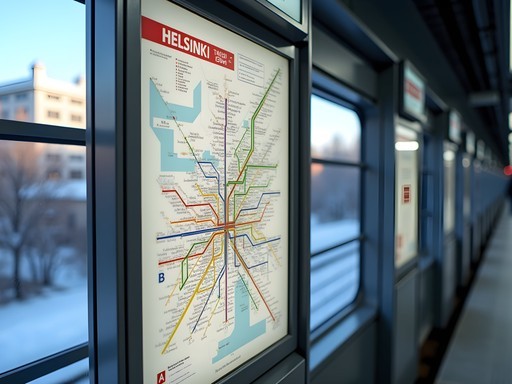
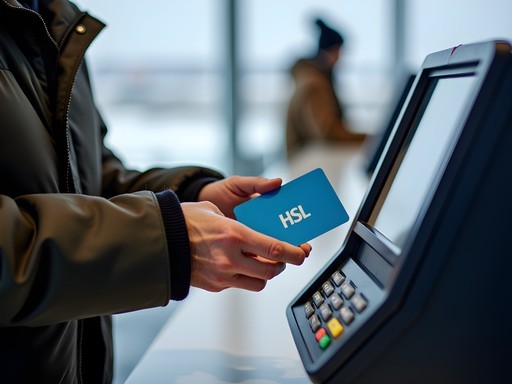
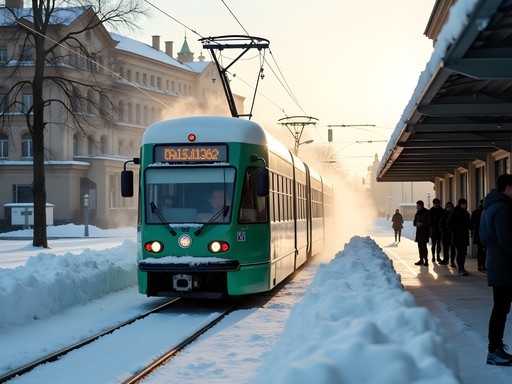
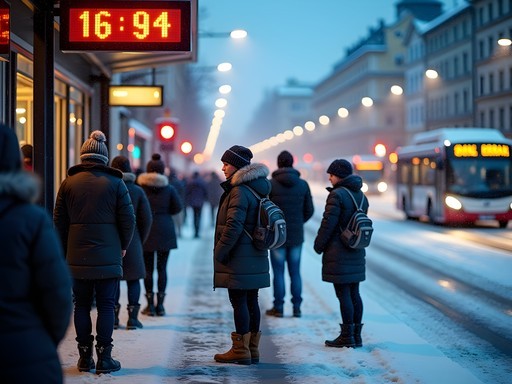
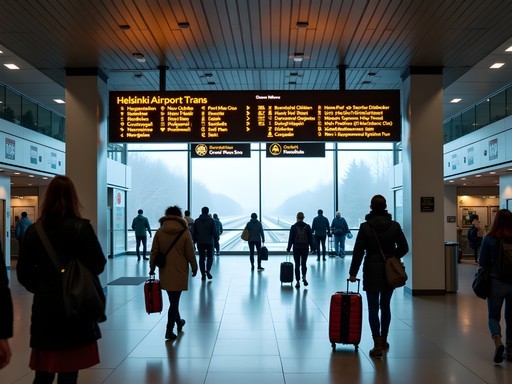
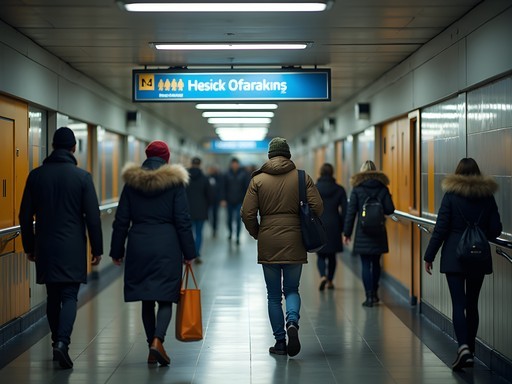










Comments
blueguide
How early do the trains and buses start running in winter? We have an early flight out and wondering if we need to book a taxi instead.
Ana Johansson
Most services start around 5:30am, but the 615 airport bus runs 24/7 with reduced frequency overnight. Check the HSL app for your specific date as schedules can vary on weekends and holidays!
Frank Garcia
This post perfectly captures what makes Helsinki's transit system exceptional. During my backpacking trip last winter, I was analyzing transportation efficiency across Nordic capitals, and Helsinki consistently outperformed others in terms of winter reliability. The real-time updates on the HSL app were accurate to the minute even during snowfall. For budget travelers, I'd add that the 5-day ticket offers significant savings compared to daily purchases. Also worth noting that unlike some European cities, Helsinki's transport network extends well into the suburbs, making it possible to find cheaper accommodation outside the center without sacrificing accessibility. The heating systems on trams deserve special mention - I documented temperature differences of +30°C between outside and inside the vehicles!
Sage Dixon
Frank, you're spot on about those heated trams! Did you try the ferry to Suomenlinna in winter? That was an experience I'll never forget - crossing the partially frozen harbor while staying toasty inside.
Frank Garcia
Sage, yes! The Suomenlinna ferry was incredible. Watching ice breakers create paths while sipping hot chocolate in the cabin was a highlight. The ferry is included in the HSL pass too - amazing value!
coolperson
Love that photo of the metro station with all the snow outside! Helsinki looks magical in winter.
citylegend
Pro tip: The 24hr ticket is worth it if you're doing lots of sightseeing in one day. Saved me tons of money!
blueguide
Is the 24hr ticket easy to buy at the airport? Or should I get it in advance?
citylegend
Super easy at the airport! There are ticket machines right when you exit baggage claim, or you can use the HSL app which is even easier.
happymaster
Going to Helsinki in November, this is perfect timing! Thanks!
Sage Dixon
Ana, this guide brings back memories of my Helsinki adventure last winter! I remember being completely blown away by how the trams kept running despite heavy snowfall. There was something magical about riding tram #4 through the snow-covered streets at dusk, watching locals completely unfazed by weather that would shut down my hometown of Philadelphia. My pro tip: get a window seat on the 24 bus route for stunning coastal winter views. Also, I learned the hard way that removing gloves to find your HSL card at -15°C is painful - I started keeping mine in an easily accessible jacket pocket with my hand warmers nearby. Helsinki's transit system really does make winter exploration accessible for everyone!
smarthero
Just got back from Helsinki last week and this guide would've been so helpful! The HSL app saved me though - definitely recommend downloading it before your trip. The metro was super clean and warm, perfect escape from the -10°C weather outside. One thing I'd add is that some bus stops have these heated waiting areas which were absolute lifesavers when I was waiting for the 615 to the airport!
Ana Johansson
Thanks for mentioning the heated bus shelters! They're definitely one of Helsinki's winter transit gems that I should've highlighted more.
cityadventurer
Just booked my tickets after reading this! Can't wait to explore Helsinki in December!
Riley Griffin
Ana, this guide brought back so many memories! Last Christmas, I took my family (including my 70-year-old parents) to Helsinki, and the accessibility of the transit system was a game-changer. For anyone traveling with older folks or kids, I'd add that the trams are incredibly easy to board even with snow on the ground. My favorite memory: watching my 8-year-old daughter's face light up when our tram driver announced the Northern Lights were visible that night! The driver actually paused at Töölönlahti Bay so everyone could step out for a minute to see them. Only in Finland!
wanderdiver
Is it easy to get from the airport to downtown using public transport in winter? Or better to grab a taxi?
redwanderer
The train from the airport is super easy and fast! Takes about 30 mins to the central station. Runs even in heavy snow.
Venture X
Premium card with 2X miles, $300 travel credit, Priority Pass